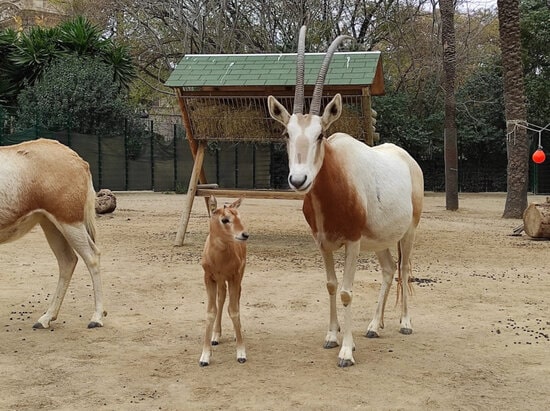The Barcelona Zoo: an antidote to decreasing biodiversity or in need of major reform?
2019 citywide legislation backed by Zoo XXI brings conflicting views to the fore

Floquet de Neu, or Snowflake, the world’s only known albino gorilla, was perhaps the Barcelona Zoo’s most famous inhabitant. Captured by a hunter in Equatorial Guinea — then a Spanish colony — and sold to Catalan primatologist Jordi Sabater Pi, he was taken to the Barcelona Zoo in the late sixties, where he became an instant star. When he died in 2003, Catalonia was in mourning.
“If we had left this gorilla there they would have killed and eaten him, which is why I think that, while not ideal, I did the right thing,” the late primatologist told the Catalan News Agency in 2009.
Founded almost 130 years ago, not long after the 1888 World’s Fair that took place in the Catalan capital’s Ciutadella Park, the Barcelona Zoo no longer captures animals like Floquet de Neu in the wild.
2019: Zoo must prioritize Mediterranean wildlife
Nowadays it has almost 170 different species and over 1,700 individual animals, and since the approval of a 2019 city ordinance, it focuses on the “conservation, scientific research, and dissemination of wild fauna and its natural habitats.”
This legislation, which was passed following a citizens initiative backed by animal rights group Zoo XXI, means the zoo must prioritize Mediterranean wildlife. It will also have 60 million euros to invest in programs and facilities until 2031.
“Modern zoos are key to preserving biodiversity. We are facing the sixth mass extinction of species,” Zoo director Antoni Alarcón, a biologist, told Catalan News. “This isn’t bad just because we think biodiversity is great for animals, but because it affects us too. Things like the Covid-19 pandemic are symptomatic of a bad relationship between humankind and ecosystems.”
Alarcón describes his workers as the true animal rights defenders, unlike some activists, and defends this position at length, stressing just how devoted they are to the animals.
“Each animal has a special diet,” zookeeper Núria Moreno Gutiérrez explained. “But before feeding them, we make sure they are stimulated when it comes to finding their food, their environment, or the structures.” Moreno Gutiérrez, who the European bison were excited to greet as she walked towards them, also described the animals and workers as “one big family.”
The Barcelona Zoo’s popularity has, nonetheless, been declining. While over a million people went to the zoo in 2016, almost 300,000 fewer visited it three years later in 2019, the year the city ordinance was passed, before the pandemic-related slump started in 2020.
Is change happening?
Some animal rights groups, notably Zoo XXI, still do not agree with how the Zoo is being run and say the 2019 legislation isn’t being implemented. According to Zoo XXI, zoos shouldn’t close but rather be transformed into places that provide “shelter, attention, assistance, and opportunities” to animals, especially local ones, as they cannot guarantee their wellbeing in their current form.
“Animals that are not endangered continue to reproduce and they do not comply with the legislation,” laments Rosi Carro, one of the group’s members.
“The climate emergency means ecosystems will continue to evolve, which is why continuing to reproduce animals that may be reintroduced into the wild 20 years from now isn’t good enough,” she said. “New zoos must leave the zoo behind and protect natural habitats and only reproduce species that will be reintroduced in the short or medium-term.”
Part of the European Association of Zoos and Aquaria, the Barcelona Zoo is currently involved in around 15 reinsertion programs. Some are with local species, like the Montseny newt, Europe’s most endangered amphibian. Others, like the dorcas gazelle program — now actually known to people in Senegal as the “white person’s gazelle” — are not, despite the ordinance’s shift towards preserving mainly Mediterranean species.
Humans, non-human animals, and the future of zoos
“Non-human animals also have sensibility and some animals also have subjective experiences,” Norbert Bilbeny, a professor of ethics at the University of Barcelona said in an interview with Catalan News. “Chimpanzees or dolphins or dogs and cats— they have a high level of sensitivity and so we have to consider their experience of suffering.”
The function of zoos, he explained, has changed throughout the years, from the Ancient Roman places of entertainment and spectacle to places showcasing the private “collections” of monarchs or the bourgeoisie to modern zoos where, at least in theory, animal wellbeing, scientific research, and education are paramount.
As decreasing biodiversity and the climate emergency become more pressing issues, and as more animal rights legislation is developed, the role of zoos will too continue to evolve.